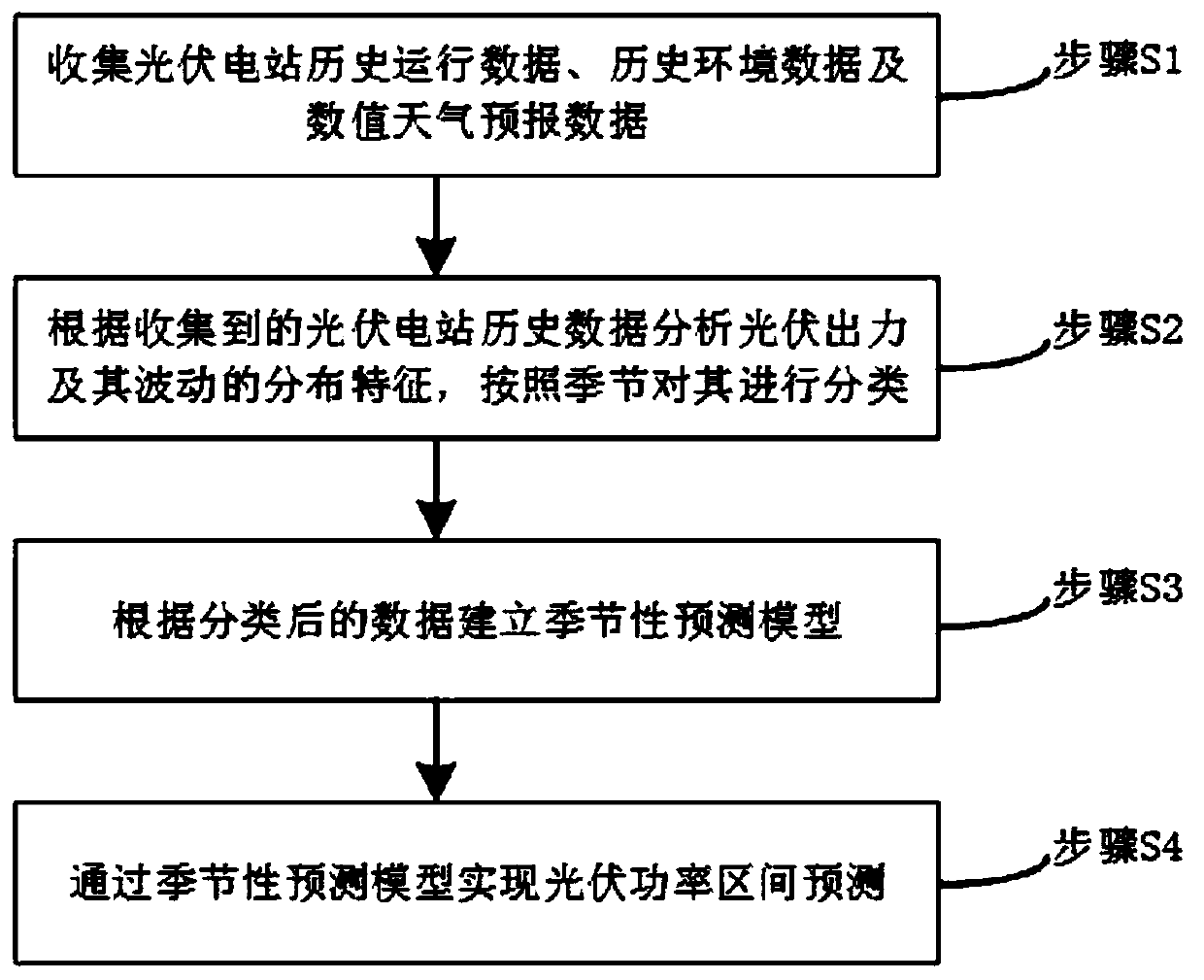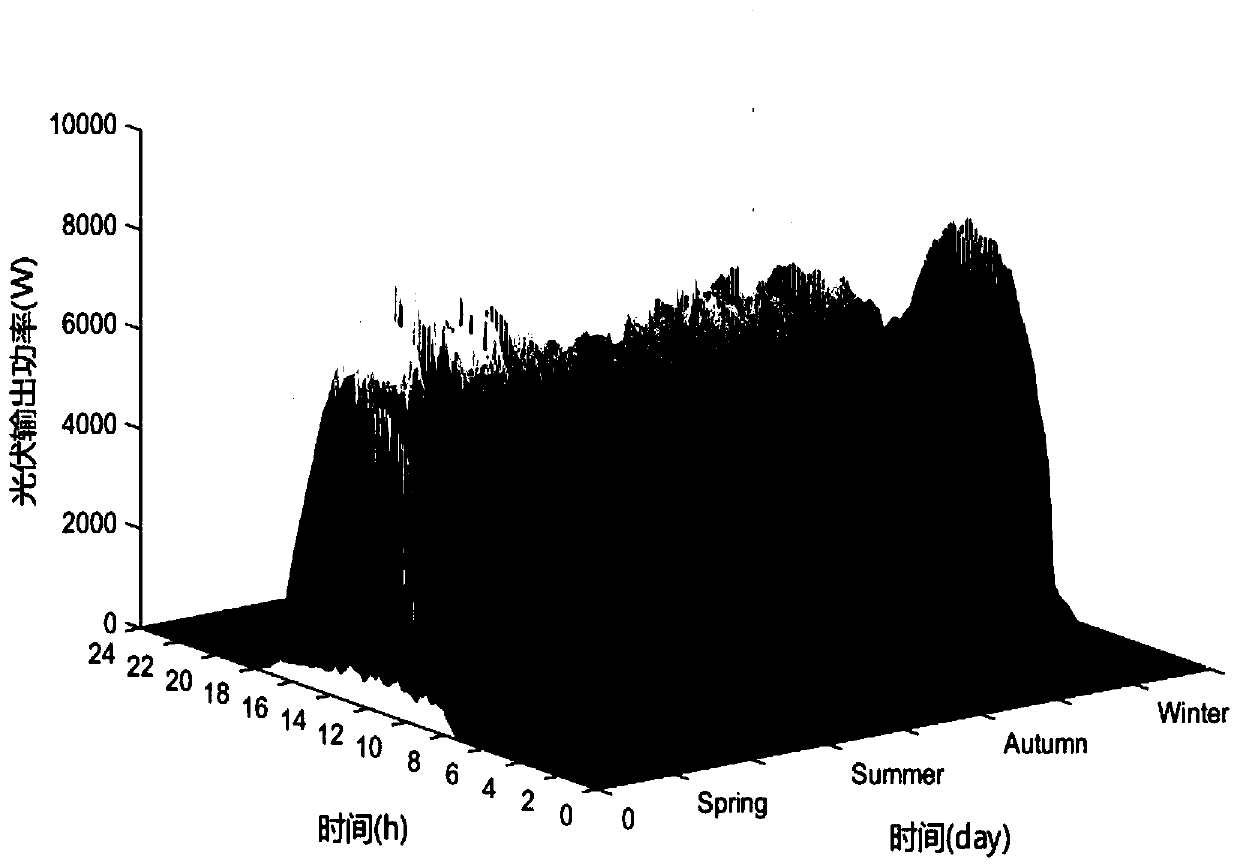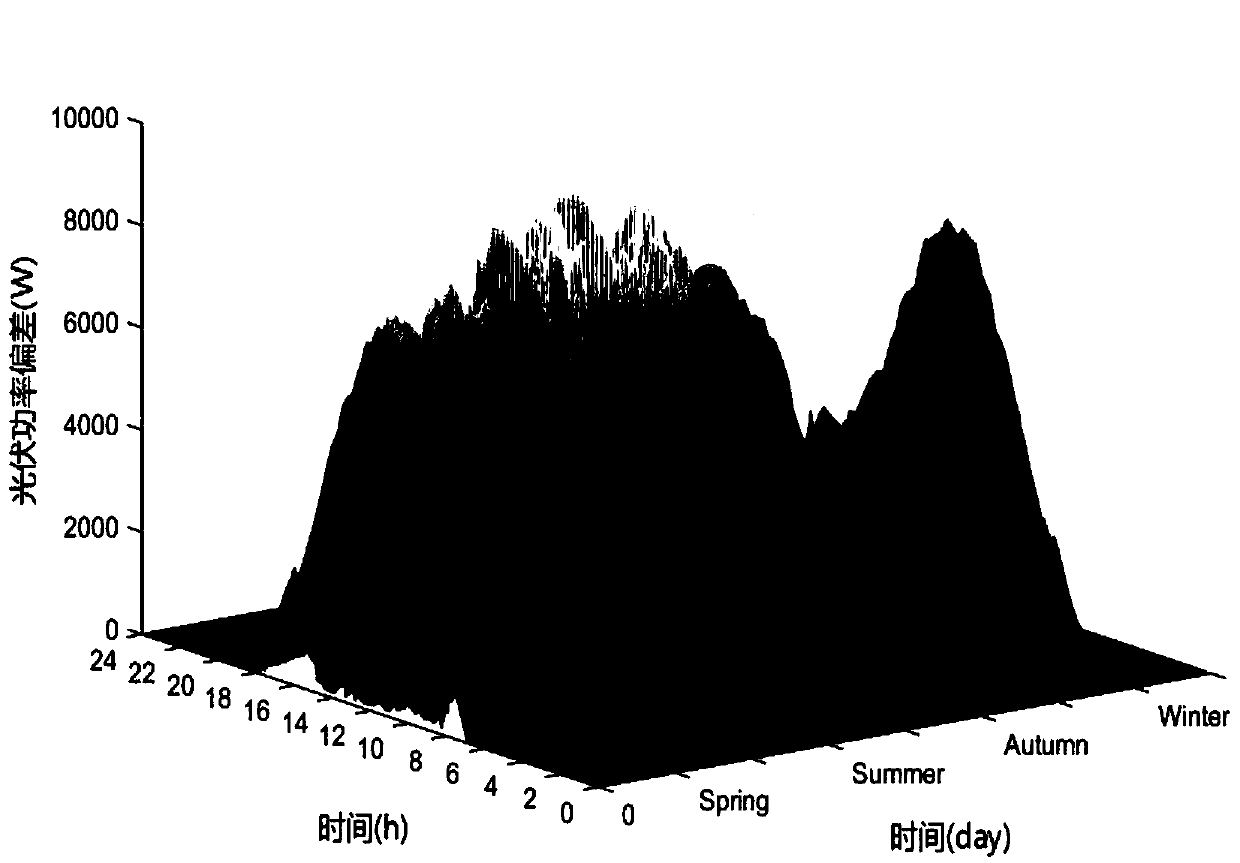Photovoltaic power multi-model interval prediction method
A prediction method and multi-model technology, applied in the direction of prediction, neural learning method, biological neural network model, etc., can solve problems such as engineering application constraints, different distribution characteristics, and difficulty in accurate prediction, and achieve easy implementation, good prediction accuracy, and simulated combined with high accuracy
- Summary
- Abstract
- Description
- Claims
- Application Information
AI Technical Summary
Problems solved by technology
Method used
Image
Examples
Embodiment Construction
[0057] In order to enable those skilled in the art to better understand the present invention, the technical solution of the present invention will be further described below in conjunction with the accompanying drawings and embodiments.
[0058] A photovoltaic power multi-model interval prediction method based on extreme learning machine and kernel density estimation, the flow chart is as follows figure 1 As shown, the specific steps are as follows:
[0059] S1. Collect historical operating data of photovoltaic power plants, historical environmental data and numerical weather forecast data.
[0060] The historical operation data includes the historical power data of the photovoltaic power station, the historical environmental data includes the historical irradiance, ambient temperature, humidity, and wind speed data corresponding to the photovoltaic power station, and the numerical weather forecast data includes the numerical weather forecast irradiance and ambient temperatur...
PUM
 Login to View More
Login to View More Abstract
Description
Claims
Application Information
 Login to View More
Login to View More - R&D
- Intellectual Property
- Life Sciences
- Materials
- Tech Scout
- Unparalleled Data Quality
- Higher Quality Content
- 60% Fewer Hallucinations
Browse by: Latest US Patents, China's latest patents, Technical Efficacy Thesaurus, Application Domain, Technology Topic, Popular Technical Reports.
© 2025 PatSnap. All rights reserved.Legal|Privacy policy|Modern Slavery Act Transparency Statement|Sitemap|About US| Contact US: help@patsnap.com



